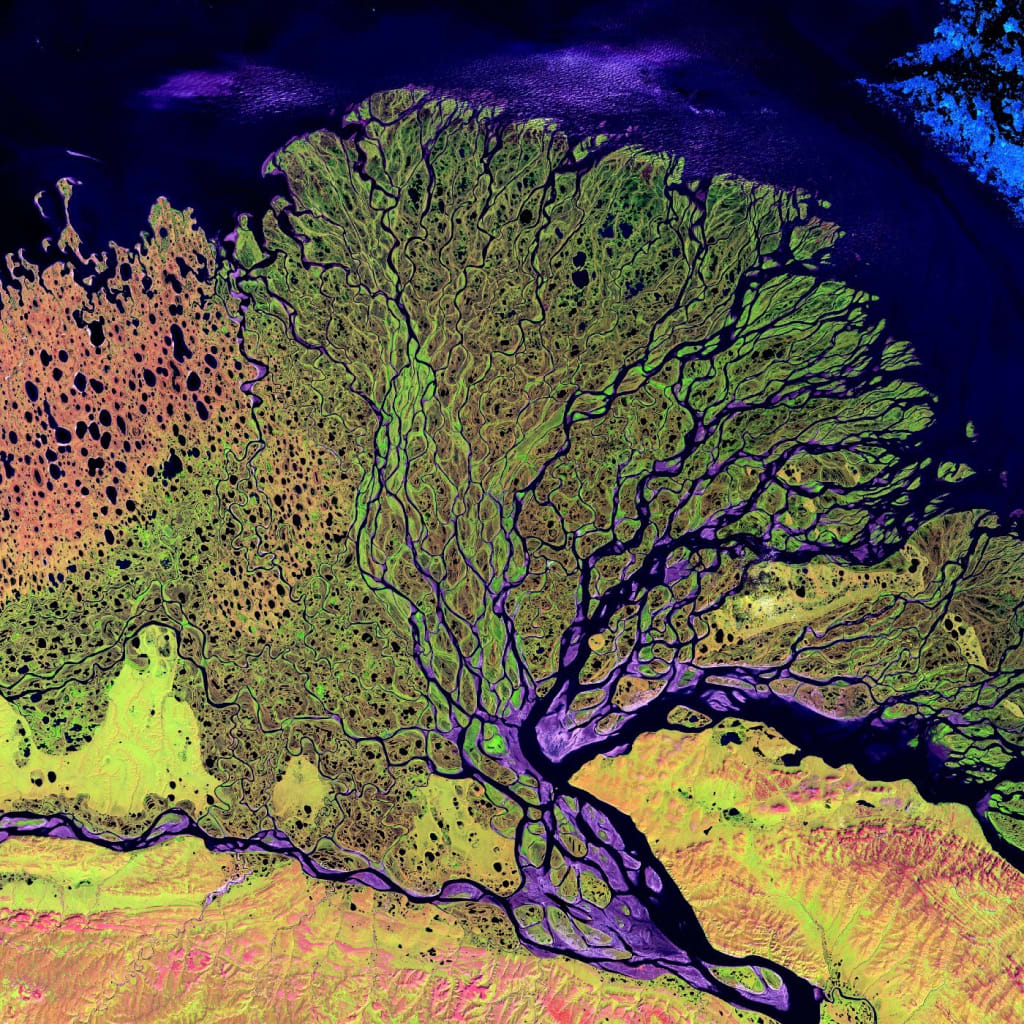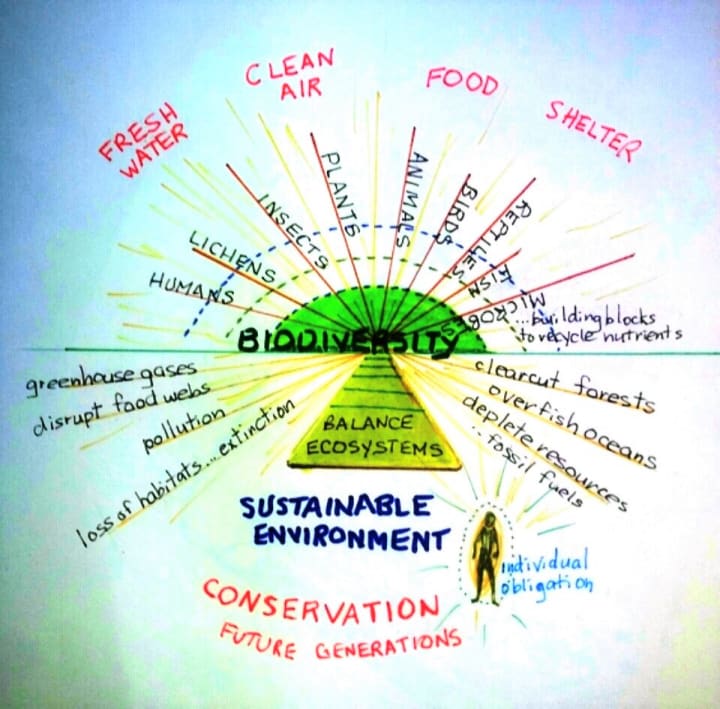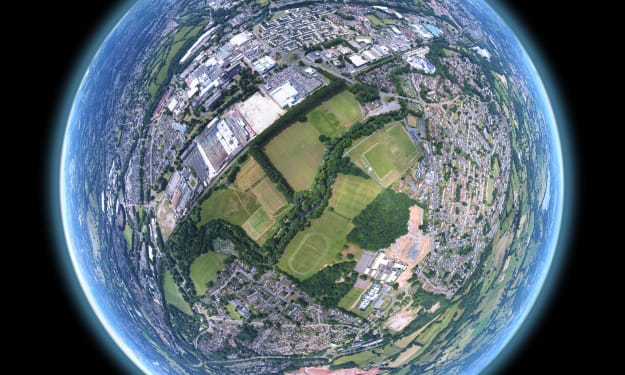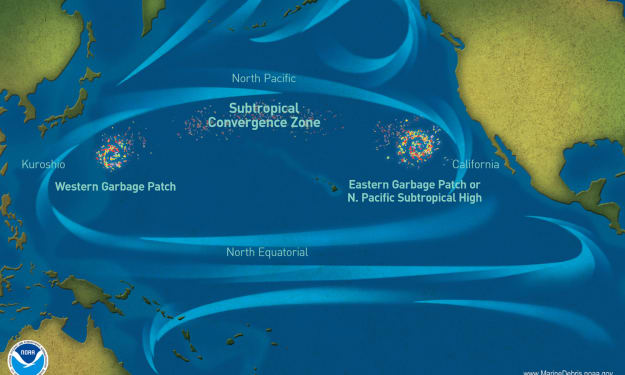If the Earth Could Ask 4 Basic Questions, How Would You Answer with a Mission Statement?
How is it possible that the most intellectual creature to ever walk the planet Earth is destroying its only home? — Jane Goodall

Meet Earth ... our planet able to support life with water, the third of eight planets in our solar system in the known universe. It runs on the energy that it receives from the Sun, and the energy that it radiates back into outer space after having been distributed throughout the components of ecology and the Earth’s climate system.
Imagine Earth Could Manifest Communication ... using our language to address its meanings, how would we discuss our commensurate survival?
Should words like Ecology, Diversity, and Sustainability become common practice, especially in school curriculum, and, perhaps even on mass media? Does the planet and society warrant more answers and discussions about common environmental problems, denial of ecosystems, loss of species, too much waste pollution, material over-consumption, not to mention global warming?
Here is my MISSION STATEMENT: As a society, we must have an affinity for our finite planet and must never diminish the Big Picture of survival in our limited biosphere without having a personal relationship to the diversity and symbiosis of all living and non-living things on Earth.
What is yours, before or after you read this article?
On the surface, Nature ripples in her streams, languishes in her lakes, whispers in her wind, wavers fathoms deep into oceans, holds the baby bird, watches the green caterpillar on a cabbage leave, entertains families on a beach … and embraces the only life we have on Earth.
In the ranks of basic research, even as a non-scientist, new personal discoveries have opened greater understanding and appreciation of the cyclical organization of nature, including the totality of carbon on this planet.
Who will speak on behalf of Nature as a living, breathing entity unto itself for future generations on Earth?
Here are four questions Earth might expect humans to answer:
1. What is biodiversity?
…means all variety of living species of plants, animals, bacteria and fungi, and human beings. Their survival is based on their diversity, interactions and co-dependence in any given ecosystem to maintain balance and support life with food, clean water, medicine and shelter.
So, what can happen if there is an average 60+% decline in global population of mammals, fish, birds, reptiles and amphibians where many species may even face extinction? Some of the reasons for decline are population growth requiring 30% more land mass and 75% fresh water for crops or livestock production as well as other human infractions such as over fishing the ocean, clear cutting forests, depleting natural resources, polluting our water … as well as contributing to a worsening climate crisis.
It is alarming to note recent UN reports how humans are compromising the Earth’s living systems:
“The more humanity exploits nature in unsustainable ways and undermines its contributions to people, the more we undermine our own well being, security and prosperity.” Maruma Mrema: Convention of Biological Diversity for the U.N.”
2. What is environmental sustainability?
…means how to maintain and protect biodiversity to meet the long-term human needs without exceeding the capacity of its supporting ecosystems to regenerate itself for future generations as a society, economy and planet.
However, a New York Times report (Sept.15, 2020) indicates that the ever-growing population of humans has led to an “ecological imbalance,” where society requires more resources to survive than can be produced; in fact as stated, 1.56 times more the amount that the Earth can generate.
This lack of progress to halt a catastrophic biodiversity collapse “not only threatens to wipe out beloved species and invaluable genetic diversity, but endangers humanity’s food supply, health and security.”
The common realization is both individuals and corporate citizens, no matter how small or large, must work together to maintain our environment with every positive action as part of a larger cycle.
Start "Green Teams"
Check out how to develop “green teams,” to help improve eco-friendly supply chains, and reduce harmful or excessive waste.
- If you cut down trees, make a plan to reforest.
- If you have a manufacturing factory, make sure your emissions are up to code.
- If you run an industrialized agricultural operation, improve crop rotation, use less fertilizers or pesticides.
3. Why is environmental sustainability based on biological diversity?
Biodiversity includes the totality of variety of all living organisms and different species which also inhabit the various types of different ecosystems, marine and terrestrial, coastal areas, forests, wetlands, grasslands, mountains and deserts. Therein, they are provided with water, food webs, shelter and climate resilience. However, sometimes the invisible parts may be taken for granted.
Ecology is the science of maintaining every ecosystem based on 4 levels ….
- non-living elements (the sun, air, water)
- primary food producers from photosynthesis (microorganisms, algae, plants)
- secondary consumers (animals, people)
- decomposers to recycle the nutrients as well as release gases for breathing.
Simply put, the first rule of all ecosystems is if one part is missing, then the other parts will be unbalanced and collapse like a house of cards over time.
4. What are some of the less known but essential cycles found on Earth?
Each ecosystem has its own energy cycle which contains all of the living species and all non-living elements in any particular environment, whether as a single tree, a forest or even a puddle. This energy flows from the sun through four ecological levels of plants, animals and humans, and back to microorganisms or microbes which complete the decomposition in order to recycle the process again.
In fact, numerous interdependent cycles are required for ecology to balance and sustain these many lifeforms and systems in an inclusive, cooperative bio-system.
Food Chains start with the sun’s energy for plants to make their own food, for animals and humans to eat it and microorganisms to recycle elements for more growth. Energy and nutrients pass from one link to another. For example, if you eat a hamburger for lunch, you are part of a food chain that started with soil nutrients in grass to cow to human.
- Pesticide Cycles are human-made chemicals like insecticides, fungicides, or herbicides. They can be absorbed by insects, fish and other organisms, blown away to non-sprayed areas, flow with rain water into streams or seep through the soil into ground water and remain in the environment for years. Pesticides damage ecosystems by disrupting food chains as part of food webs, or decrease biodiversity through loss of populations, even cause extinction of species. Also note the higher up in a food chain means more concentration of chemicals accumulating at the top. For example, from a toxic grasshopper eaten by a shrew swallowed by an owl who gets sick is called bioamplification.
- Nitrogen Cycle is the circulation of nitrogen in various forms through nature. Nitrogen is essential to life because it makes proteins and nucleic acids. Most of the atmosphere is nitrogen gas, but this gas can only be used by plants and animals if first transformed by microbes in an underground cycle called nitrogen fixation or nitrification.
- Carbon cycle is based on the most common building block for all organic life on Earth, the carbon molecule. In fact, we live on a Carbon Planet where 99% of our Earth’s crust is made from this element; found in the soil, sedimentary rocks, ocean sediments as well as in the atmosphere where it’s a part of carbon dioxide gas emitted when fossil fuels are burned or when living organisms breathe out.
Few highlights how carbon sustains our world:
Carbon comes from photosynthesis which is the light energy that transfers electrons from water (H2O) to carbon dioxide (CO2), to produce carbohydrates and release oxygen. In fact, a tree will sequester carbon dioxide at the rate of 50 pounds per tree per year and produce oxygen to breathe.
Carbohydrates are molecular compounds made from just three elements: carbon, hydrogen and oxygen. Smaller molecules are known as glucose and sucrose often called sugars. To make proteins, carbon will bind with hydrogen, oxygen and nitrogen (and sometimes sulfur).
Just think the food we eat is really a complex amalgamation of carbon, hydrogen and oxygen. Does it make you wonder how we can ever gain weight?
Hydrocarbons (petroleum) only have the elements of carbon (C ) and hydrogen (H). The carbon atoms join together to form the framework of the compound, and the hydrogen atoms attach to them in many different configurations. Standard composition for petroleum is 85% carbon 12% hydrogen and maybe a little nitrogen / oxygen.
A probable assumption is that our society mostly functions because of this most important relationship found between a water molecule and a hydrocarbon. It is the source of much human business power sources, plastic production as well as a pollutant when an unbalance of carbon dioxide is returned to the atmosphere influencing global warming. This is still an area of grave research to find some reciprocity to protect the precious ecosystems.

In summary, these are only 4 questions so far to answer how to facilitate Earth’s cooperation and survival. The bottom line is that in all of Earth’s immemorial complexity there are a handful of words that should be part of every day conversation and responsibility; namely, Ecology, Diversity, and Sustainability.
Of course, the more you can talk about carbon cycles, the bigger the picture becomes of peaceful co-existence.
What questions do you have about how to maintain and respect Earth?
What is your Mission Statement, before or after reading this article?
Annemarie Berukoff
Excerpt from The Incredible Journey of a Water Sprite with Roots …an eco-fiction e-book for all ages who care about ecosystems and Cyclical Truths
“Stentor (a microbe) stretches his long neck as long as he can.
This is termed the food chain and it is part of the great ecological cycle. This is one of the great Cyclical Truths … if one part lives, then the other part lives; if one part is destroyed then the other part will be destroyed in time.
Who gave Mother Nature such divine plans, how to look after even the smallest, to even the largest. Isn’t ecology wonderful how it makes plants, animals and humankinds can stay living in co-operation? Isn’t co-operation wonderful, a true democracy through diversity?”
Co-operation … co-operation … so many heads are now reciting the same word and thought.”
About the Creator
Annemarie Berukoff
Experience begets Wisdom: teacher / author 4 e-books / activist re education, family, social media, ecology re eco-fiction, cultural values. Big Picture Lessons are best ways to learn re no missing details. HelpfulMindstreamforChanges.com
Enjoyed the story? Support the Creator.
Subscribe for free to receive all their stories in your feed. You could also pledge your support or give them a one-off tip, letting them know you appreciate their work.







Comments
There are no comments for this story
Be the first to respond and start the conversation.